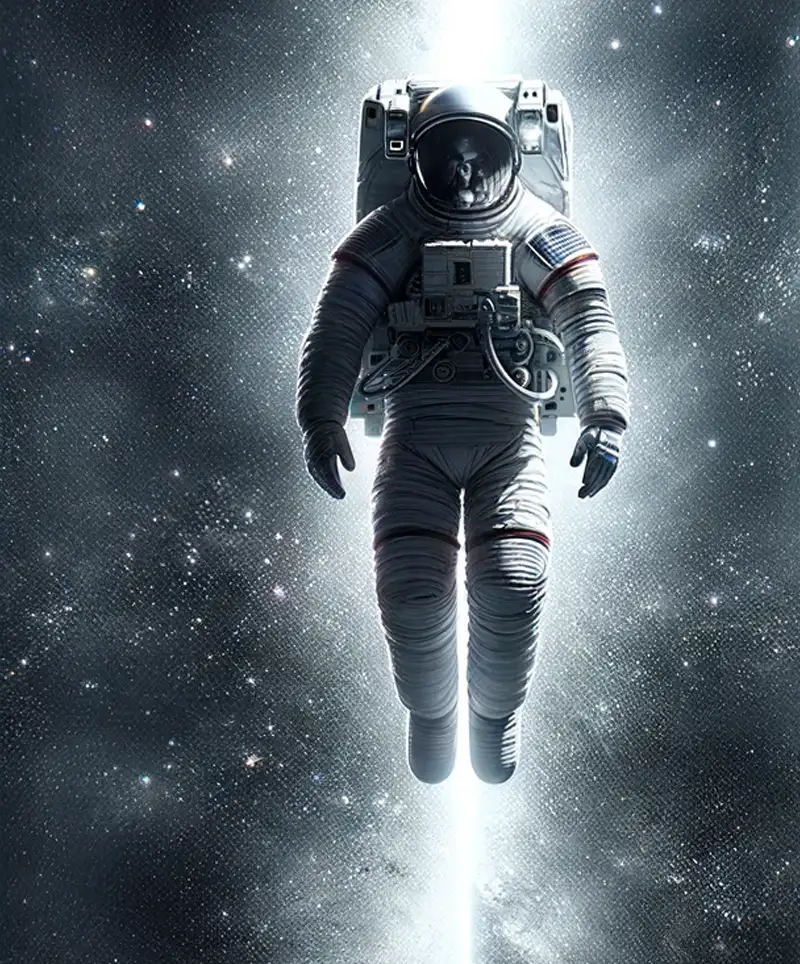Celebrating the Boundless
Every year on April 12, we take a moment to celebrate the incredible, mind-blowing, and slightly terrifying reality that humans have figured out how to strap themselves to rockets and launch into the cosmos. International Day of Human Space Flight marks the anniversary of Yuri Gagarin’s historic journey in 1961 when he became the first person to leave Earth, orbit the planet, and return—proving once and for all that gravity is, in fact, optional.
This day is more than just a nod to past space travelers; it’s a celebration of human curiosity, ambition, and the willingness to sit on top of a controlled explosion just to see what’s out there. Whether you’re a die-hard space nerd, a casual stargazer, or someone who just appreciates zero-gravity hairdos, April 12 is your chance to honor the pioneers who made human spaceflight a reality.
From One Small Step to Giant Leaps
The journey to human spaceflight has been equal parts genius, courage, and sheer audacity. When you think about it, space travel is the ultimate "let’s see what happens" experiment—except with a much higher risk of spontaneously becoming space dust.
1961: Yuri Gagarin and the Ultimate Roller Coaster Ride
On April 12, 1961, Soviet cosmonaut Yuri Gagarin boarded his spacecraft, Vostok 1, and became the first human in space. His mission lasted just 108 minutes, but in that short time, he managed to orbit the Earth, experience weightlessness, and become an international legend.
 Gagarin’s spacecraft had no manual controls—he was essentially a cosmic passenger along for the ride. If anything had gone wrong, his only option was to hope it went wrong in a survivable way. But everything went right, and when he landed back on Earth (by parachuting out of his capsule because, you know, landing softly in a spaceship wasn’t a thing yet), he was greeted as a hero.
Gagarin’s spacecraft had no manual controls—he was essentially a cosmic passenger along for the ride. If anything had gone wrong, his only option was to hope it went wrong in a survivable way. But everything went right, and when he landed back on Earth (by parachuting out of his capsule because, you know, landing softly in a spaceship wasn’t a thing yet), he was greeted as a hero.
His famous words during liftoff? "Poyekhali!" (Let’s go!)—which is now the spaceflight equivalent of "hold my beer."
1969: The Moon Landing – A Giant Leap for Mankind (and an Even Bigger TV Event)
Fast-forward to July 20, 1969, when Neil Armstrong and Buzz Aldrin made history by becoming the first humans to walk on the Moon. The Apollo 11 mission wasn’t just a scientific triumph—it was also the biggest television event of the time, watched by over 600 million people.
Armstrong’s famous words "That’s one small step for [a] man, one giant leap for mankind" were slightly overshadowed by Buzz Aldrin accidentally bouncing like a toddler on a trampoline in low gravity.
Meanwhile, Michael Collins, the third astronaut, stayed in orbit alone in the command module—making him the most isolated human in history at the time. (He handled it well, but you just know he had serious FOMO.)
The Space Shuttle Era: Reusable Rockets and Velcro Everything
In 1981, NASA introduced the Space Shuttle program, giving us iconic names like Columbia, Challenger, Discovery, Atlantis, and Endeavour. The Shuttle was the first reusable spacecraft, which meant astronauts no longer had to rely on single-use rockets—finally, a spacecraft that wasn’t "one and done."
The Shuttle era saw milestones like:
- The launch of the Hubble Space Telescope (1990)
- The construction of the International Space Station (ISS) (starting in 1998)
- Astronauts learning to eat tacos and play musical instruments in zero gravity
It also solidified space travel as a regular thing—meaning being an astronaut went from being an impossible dream to a very extreme job with shockingly boring paperwork.
The New Space Race - Private Companies and the Mars Hype Train
Fast-forward to today, and spaceflight is no longer just a government gig. Thanks to companies like SpaceX, Blue Origin, and Virgin Galactic, space travel is becoming (slightly) more accessible—assuming you have a billionaire-sized budget.
- Elon Musk wants to colonize Mars (probably so he can open the first interplanetary Tesla dealership).
- Jeff Bezos took a joyride to space in a rocket that looks suspiciously like a flying pen.
- NASA is planning to send humans back to the Moon (Artemis Program) and eventually to Mars—because, apparently, we’ve decided Earth just isn’t challenging enough anymore.
With advancements in reusable rockets, space tourism, and interplanetary exploration, we’re closer than ever to making human spaceflight as normal as booking a flight to Florida—just with fewer baggage fees.
How to Celebrate International Day of Human Space Flight
You don’t need a spacesuit to celebrate this historic day (though, if you have one, please wear it). Here are some stellar ways to honor humanity’s adventures beyond Earth:
- Watch old space mission footage – Relive the Apollo 11 landing, the Space Shuttle launches, or even clips of astronauts accidentally dropping tools into the void.
Look up at the stars – Even if you can’t leave Earth’s atmosphere, you can still appreciate the vastness of space from your backyard. Bonus points if you spot the ISS passing overhead.
- Read about space history – From Gagarin’s flight to the Mars rovers, the stories behind space exploration are equal parts inspiring and slightly terrifying.
- Binge space movies – Apollo 13, The Martian, Gravity, Interstellar—Hollywood loves space, even if they occasionally ignore the laws of physics.
- Eat like an astronaut – Try freeze-dried ice cream, Tang, or just eat a tortilla instead of bread (NASA learned the hard way that floating bread crumbs = bad).
- Dream big – Space travel started as a wild idea, and now we have robots on Mars. Who knows? Maybe one day, we’ll all have a round-trip ticket to the Moon—hopefully with a window seat.
The Final Countdown
Human spaceflight is more than just rockets, spacewalks, and cool-looking suits—it’s a testament to human curiosity and ambition. From Yuri Gagarin’s historic flight to the dreams of future Mars missions, we continue to push the limits of what’s possible.
So, on April 12, take a moment to appreciate the brilliant, slightly crazy people who dared to leave Earth just to see what’s out there. Whether it’s for science, exploration, or just to prove that humans are incapable of staying in one place for too long, spaceflight remains one of our greatest achievements.
And remember—we may all be Earthlings for now, but the future? That’s looking pretty interplanetary.
Happy International Day of Human Space Flight!
Please Share our Content






 Gagarin’s spacecraft had no manual controls—he was essentially a cosmic passenger along for the ride. If anything had gone wrong, his only option was to hope it went wrong in a survivable way. But everything went right, and when he landed back on Earth (by parachuting out of his capsule because, you know, landing softly in a spaceship wasn’t a thing yet), he was greeted as a hero.
Gagarin’s spacecraft had no manual controls—he was essentially a cosmic passenger along for the ride. If anything had gone wrong, his only option was to hope it went wrong in a survivable way. But everything went right, and when he landed back on Earth (by parachuting out of his capsule because, you know, landing softly in a spaceship wasn’t a thing yet), he was greeted as a hero.








 "Sláinte!" is a traditional Irish expression used as a toast, equivalent to "Cheers!" in English.
"Sláinte!" is a traditional Irish expression used as a toast, equivalent to "Cheers!" in English.